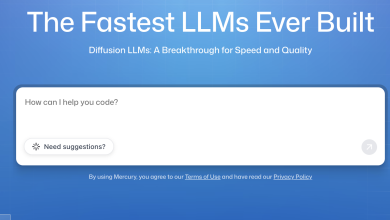
As we approach the third anniversary of ChatGPT’s buzzy debut, it’s time to step back and take stock of the changes this technology has brought about. People are now using LLMs for everything from writing their wedding vows to planning their dinners, so it’s no exaggeration to say that this tech has been a game-changer for many people’s day-to-day lives. The rise of LLMs has changed how people search online. As more and more users pull up Gemini or Claude instead of Google or Bing to find what they’re looking for, businesses are realizing that their traditional search-centric marketing tactics may be in need of a refresh to remain competitive and relevant in the wake of LLMs’ influence.
Product managers always try to plan for where the customer is going — what they will need and how those needs will manifest, but that path is shifting more every day. As LLMs change how people search, discover, and decide, the challenge for product managers won’t just be anticipating customer needs but reimagining the customer journey itself.
As search continues to evolve, the most forward-thinking organizations will begin building products for a future where AI intermediates every step.
A sea change for search
The introduction of Google search in 1998 was a huge step forward for the internet and the tech space at large. It was so popular that “Googling” quickly became synonymous with “online searching,” no matter which search engine you were using.
In the new LLM-laden landscape, a similar verbification is already being colloquially coined regardless of the LLM being used — “Let me ChatGPT it!” This generic use of a specific product name to refer to all LLM chatbots is indicative of just how common LLM usage has become.
According to recent research, the majority (86%) of Americans trust search engines, but trust in AI has already almost caught up, with 79% trusting AI search engines. By 2028, the number of U.S. adults who use AI as their go-to online search tool is expected to top 36 million, up from 15 million in 2024.
This predicted uptick should give businesses pause because it’s clear the playbook is shifting. It’s likely that we’re going to see a departure from tried-and-true strategies like SEO and paid ads, while factors like attribution and product strategy become more important for capturing customers’ attention.
For marketing, the biggest difference between customers using an LLM to search versus just Googling it lies in the links. The shift from link-driven discovery through a search engine to receiving direct, specific answers from an LLM means customers just aren’t clicking, and losing those clicks can quickly tank traditional marketing tactics.
On the product side, LLM searches mean losing out on behavioral data and user-journey insights that are critical for product decision-making.
Traditional product-oriented thinking focuses on three things:
- Knowing your customer
- Solving current problems
- Anticipating where the customer is going and meeting them there
However, the meteoric rise of LLM search brings up questions. What happens when customers don’t know where they’re going? Will searches still power discoveries? Will the click be totally cut off because of AI search? Is it time to rethink the ecosystem?
Though there’s no clear answer to any of these questions at this time, there are some ways we can better prepare ourselves for when the answers are revealed.
Optimizing for AI search
So how is a tech-savvy business supposed to respond to the rise of AI-powered product search behavior?
Equipping your marketing teams with some knowledge of AI optimization (AIO) can be a meaningful first step. AI can sift through huge amounts of data that a human would never be able to handle alone and surface the most relevant, and offer suggestions based on key elements like reliability, service, and price.
With AIO, organizations should ensure that their differentiators are obvious and pronounced enough for the AI systems to pick up on. AI relies on public online sources like reviews to make its suggestions, so it is equally important to ensure that the data the AI is pulling from is optimized to be measurable and recognizable. Standing out may mean ensuring the online presence and content surrounding a product are differentiated in a way that the AI prioritizes. These features may include:
- Competitive pricing
- Product features and innovation
- Unique design
- Outstanding service
Product success in the future could hinge on a brand’s ability to communicate to AI systems what makes its product special and valuable.
The shift to AI-powered search is doing more than just changing how people find information. It is fundamentally reshaping the relationship between users and the companies that serve them. AI will continue to transform search behavior.
The organizations that will emerge victorious will be those that figure out how to quickly readjust their strategies to remain visible and valuable in an environment where being found online means something totally different than it did just a few years ago. Organizations that can pivot and adapt quickly to these new realities will help mold the future of digital interactions. Those who don’t may find them lost in the search results of yesterday.




